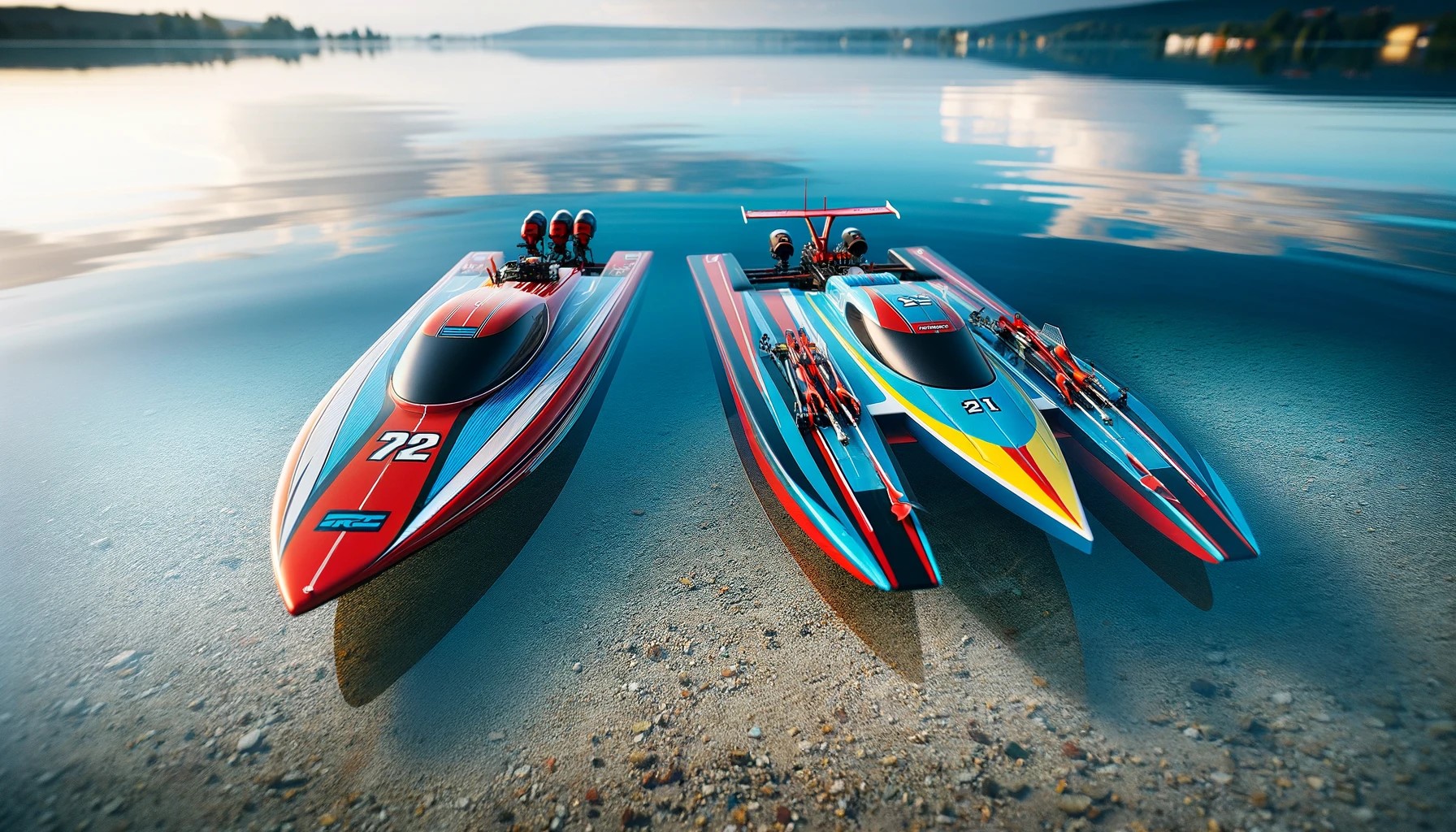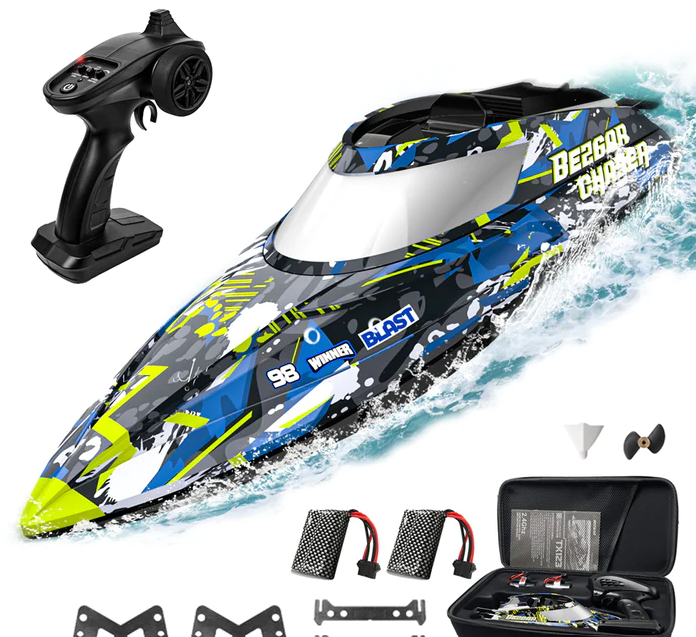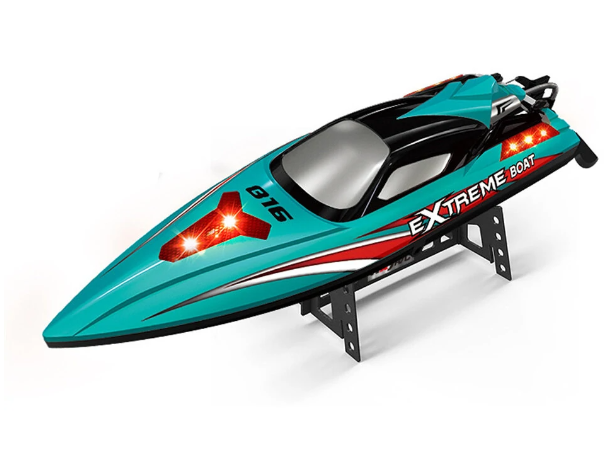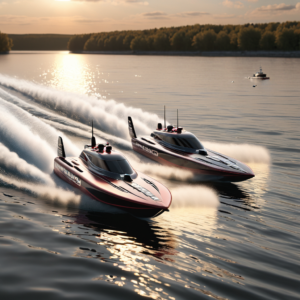
Quick Start Guide to Help You Set Sail in the Exciting World of Radio-controlled Boats
So, you’re thinking about trying out RC boating. Whether you’re itching for outdoor fun with your kids or fancy cruising on the water, let’s help you dip into this exciting hobby…
If you’re new to TransporToys or the world of RC vehicles, I highly recommend checking out the Rookies’ Guide to RC Toy Vehicles for essential knowledge.
Now let’s get on with a bit of background…
RC Boating – Then and Now
RC boating has undergone quite the makeover over the years, just like its buddy, RC aircraft. Back in the 1950s, hobbyists played around with wooden boats and engines. But nowadays? We’ve got a boatload of options to pick from! Today, RC boating isn’t just for the pros; it’s easier and more family-friendly than ever.
RC Model Ships ⚓ – Besides RC boats, there’s also a fascinating world of RC ship models. These models replicate historic and modern ships, If this interests you, check out ModelerCentral.com >>
Getting to Know Your RC Boat
You don’t need to be a maritime expert to enjoy the thrill of RC boating, but a little know-how can go a long way.
RC boats come in all shapes and sizes, from speedy racers to graceful sailboats, offering something for everyone.
RC boats are crafted from durable materials like fiberglass, plastic, or wood.
Most vessels include the hull (the main body of the boat), a propulsion system typically consisting of an electric motor and battery pack, a shaft to transmit power to the propeller, a rudder for steering, an electronic speed controller (ESC) to regulate motor speed, a receiver to receive signals from the transmitter.
Types of Boat Hulls

You’ll encounter a variety of hull shapes in RC boats. The Deep V hull resembles a V shape and offers excellent stability, particularly in rough waters. Conversely, the Catamaran features two hulls positioned side by side, providing speed and agility, ideal for quick maneuvers and racing.
While there are a few other types, these are enough to get you started on your RC boating journey.
Picking Your First RC Boat
As a newbie, choosing the right boat is key to smooth sailing. Look for something easy to handle but still exciting to zip around the water. Think of it as dipping your toes in before diving headfirst into the hobby!
Similar to my recommendations for beginners in RC aircraft and RC cars, a mid-sized Ready-to-Run electric boat priced under $200 is an ideal choice for those starting in RC boating.
Here are a few hand-picked options to consider…
Beginner RC Boat

As a top budget-friendly pick, consider the Bezgar TX123.
Despite its compact size at just 10 inches long, it’s surprisingly fast, offers capsize recovery, includes a handy portable case, boasts a lengthy 40-minute runtime, and features built-in LEDs for visibility, all under $100!
Check availability:
Next up is the HJ816 PRO – a zippy 47cm (18.5″) long RC boat, ideal for beginners, capable of speeds up to 55kph (35mph), and comes with a handy self-righting function and cool LED lights.
Check availability:

See it in action…
Intermediate RC Boat
Ready to elevate your RC boating experience? Dive into the world of true RC boat enthusiasts with a high-performance vessel…
The Cheerwing UDI005 Arrow boasts a powerful brushless water-cooled motor, achieves speeds of 30 mph (over 50 kph), features capsize recovery, a poor signal alarm, and a dual-locking cover for enhanced water resistance.
Check availability on Amazon >>
Taking Care of Your RC Boat

- Power Up (and Off) Properly: Begin by turning on your controller before the boat to establish a secure connection, and when you’re done, turn off the boat first. This sequence helps prevent unexpected movements and enhances the safety of your RC boating experience.
- Dry and Lubricate: After outings, especially in saltwater, rinse your boat with fresh water to fend off corrosion. Thoroughly dry it, focusing on the electronics and motor. Lubricate moving parts like the propeller shaft and rudder to keep them functioning smoothly.
- Inspect and Seal: Regular checks for loose screws, bolts, and fittings. Ensure your boat’s seals and waterproofing around the hatch and electronics are intact to avoid water damage.
- Store properly: When storing, choose a cool, dry place away from sunlight and remove batteries to avoid leakage or damage, which helps maintain your boat’s condition over time.
Here’s a video by HorizonHobby showing you how to maintain your RC boat’s flex shaft:
Tips for Smooth Sailing
- Take it Easy: Begin your RC boating experience by getting to know your boat and how it handles. Practice in calm waters and remember that developing your skills will take time. Patience is key, and each session on the water is a learning opportunity.
- Safety First: Always prioritize safety for yourself and others, especially if kids are involved. Ensure that everyone near the water wears a life jacket, and apply sunscreen to protect against sunburn. Having a first aid kit on hand is also essential for dealing with any minor accidents promptly.
- Weather Watch: Before heading out, check the weather forecast. Calm weather conditions make for a more enjoyable and safer boating experience. Avoid using your RC boat during bad weather to prevent loss or damage.
- Essential Gear Kit: Pack essential items such as spare batteries, a small toolkit for repairs, waterproof bags for electronics, and a retrieval device, like a telescopic pole or a recovery line with a throwable weight. Having these essentials on hand can significantly enhance your boating experience, ensuring you’re prepared for any situation.
- Join a Community: Engaging with an RC boating community can greatly enhance your experience. It’s a great way to exchange tips, get advice, and connect with others who share your enthusiasm for RC boating.
Final Thoughts Before You Set Sail
As you embark on your RC boating adventure, remember to have fun and soak up every moment on the water.
Smooth sailing, captain! And don’t forget to share your aquatic escapades on our Facebook page. Anchors aweigh!
